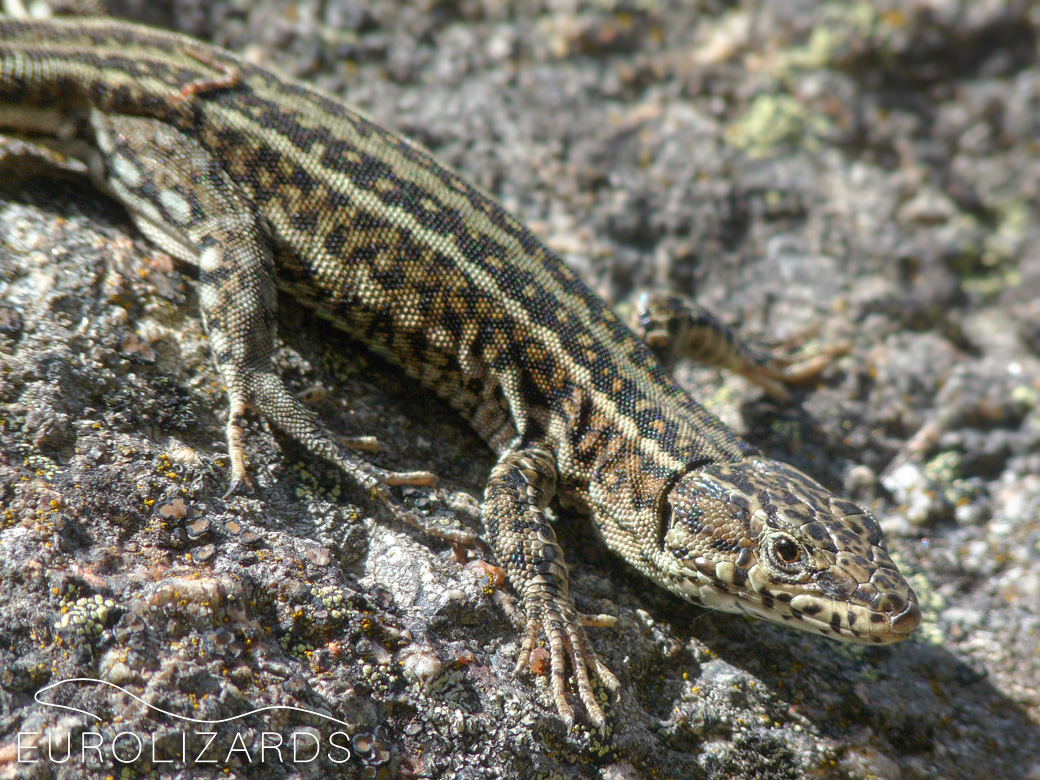Podarcis guadarramae - Guadarrama Wall Lizard

The Guadarrama Wall Lizard is specialized on the granite rock substrates of western-central Iberia. No granite rocks - no Podarcis guadarramae! It mainly occurs in the mountain ranges of the Sistema Central - from Sierra del Alto Rey (Guadalajara) in the east to Sierra de Guadarrama, Sierra de Gredos and Peña de Francia. For distribution range see map at Podarcis hispanicus.
Podarcis guadarramae differs from the neighbouring Iberian Podarcis species by its flattened head and elongated snout. It has contact zones or overlapping ranges with the following species:
- Podarcis lusitanicus: Podarcis lusitanicus and Podarcis guadarramae can best be distinguished by locality - in the contact zone of both species (Spanish-Portuguese border in the Salamanca and Cáceres area), separation of the two species by external characters may be impossible. However, males of P. guadarramae from Central Spain frequently show broad dark supradorsolateral stripes whereas males of P. lusitanicus usually show a dark dot or net pattern on their backs.
- Podarcis virescens, Podarcis carbonelli and Podarcis liolepis: These species frequently show bluish outer ventral scales which (usually) lack in Podarcis guadarramae and have shorter heads.
- Podarcis bocagei: This species has deeper heads and blunter snouts than Podarcis guadarramae.
Podarcis guadarramae may also co-occur with Podarcis muralis (e.g. Sierra de Guadarrama / Madrid). The latter one is much bigger than Podarcis guadarramae and frequently shows prominent blue outer ventral scales and orange throats.








EUROLIZARDS - The Home of European Lizards! © Birgit & Peter Oefinger
